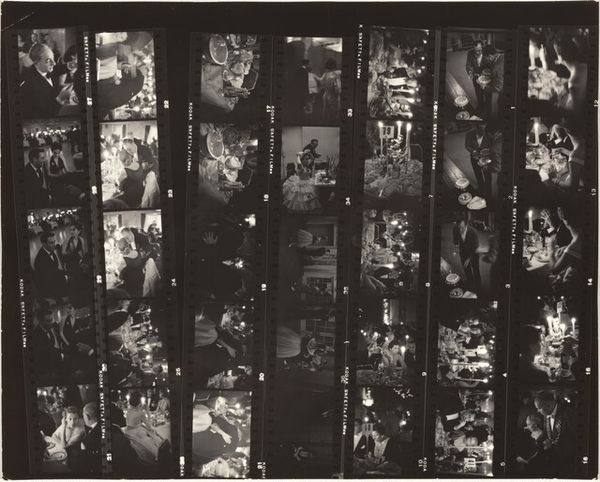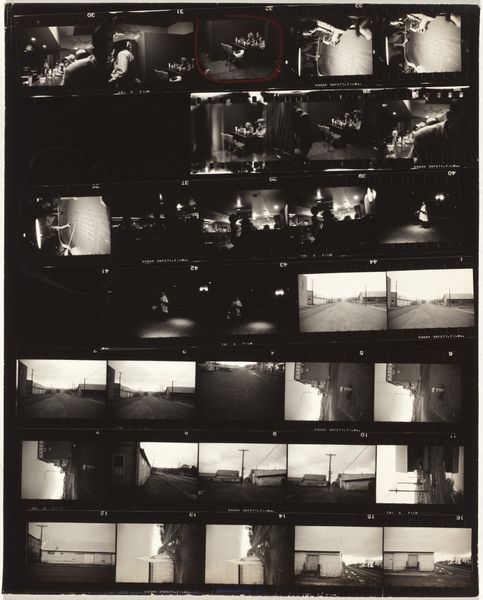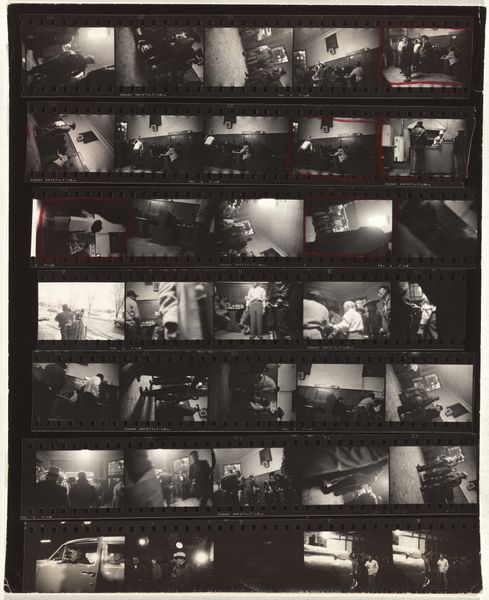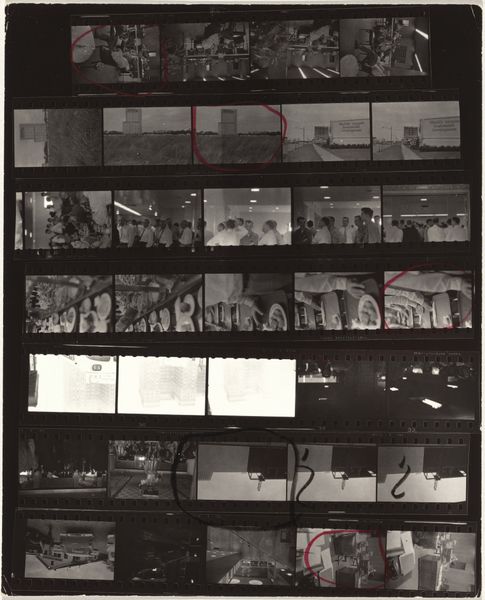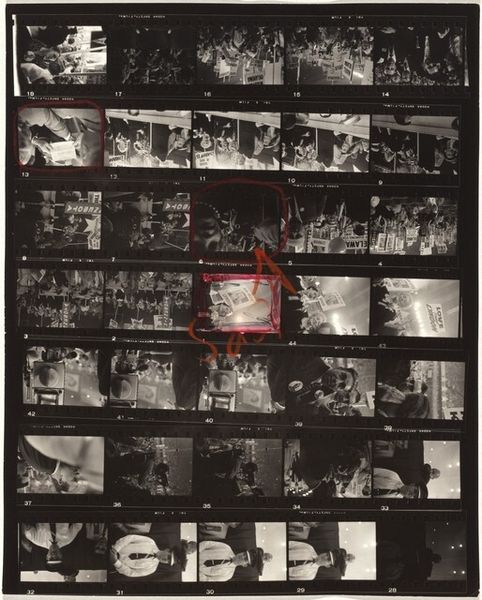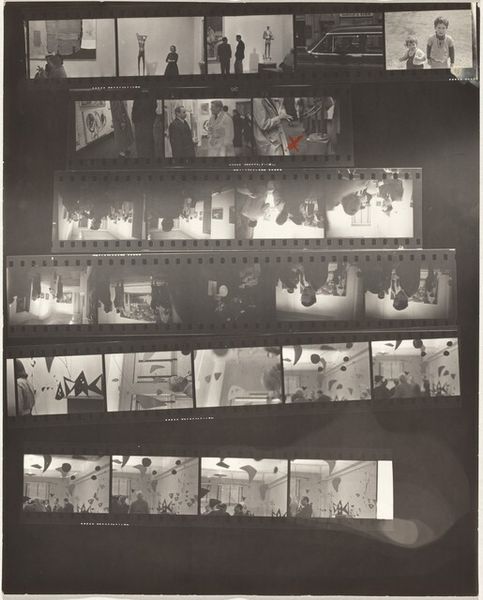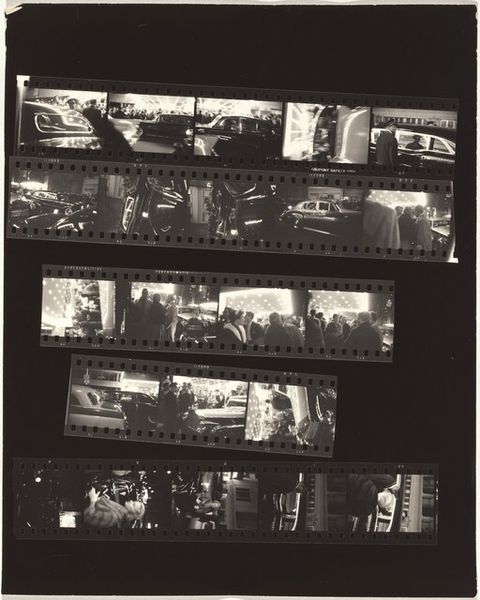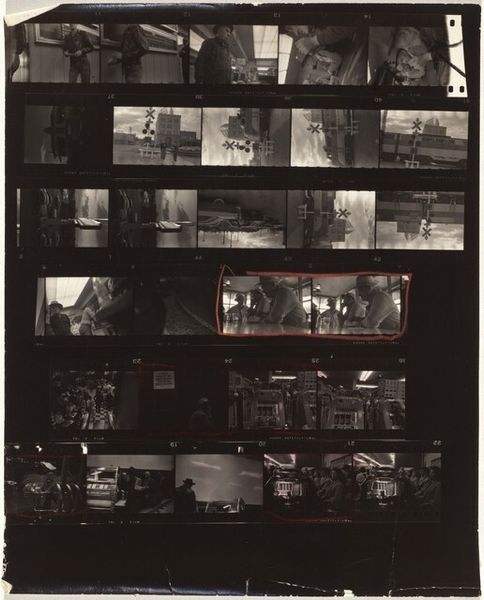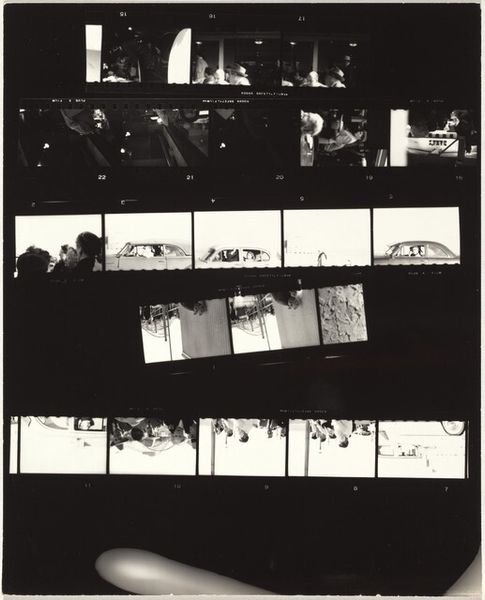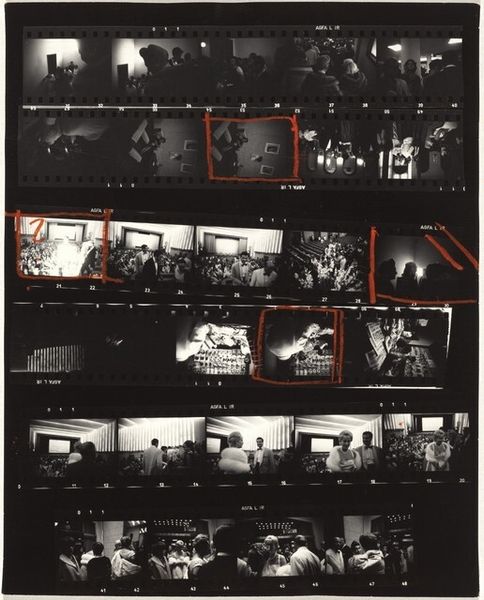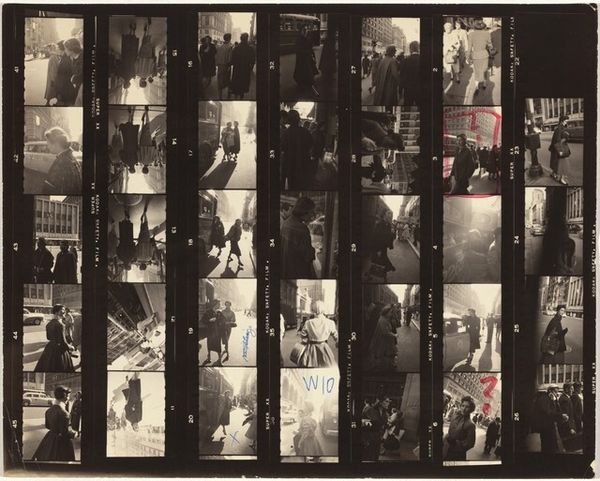
photography, gelatin-silver-print
#
portrait
#
wedding photography
#
social-realism
#
photography
#
group-portraits
#
gelatin-silver-print
Dimensions: overall: 25.3 x 20.4 cm (9 15/16 x 8 1/16 in.)
Copyright: National Gallery of Art: CC0 1.0
Editor: This is "Guggenheim 110/Toy Ball C6/Americans 67--New York City," a gelatin silver print by Robert Frank from 1954. The contact sheet format offers many small windows into what appears to be a formal event, but there's a starkness in the contrasts and an off-kilter feeling that makes it uneasy. What can you tell me about it? Curator: Well, considering the gelatin silver print as its material basis is fundamental here. These images emerge through a very specific chemical and social process. We're seeing the product of light interacting with treated silver, of course, but also the imprint of a photographer moving through a specific milieu. Look at the uniformity of these shots. Are we seeing an implicit commentary about class and social performance being manufactured and consumed, just as these gelatin prints are manufactured and consumed? Editor: I see what you mean. It's not just capturing a scene, but producing and distributing it, like any other product. But how much control did Frank really have? Isn't it just documentary? Curator: Think about the very deliberate choice of framing, the stark contrasts in printing, the act of sequencing these particular images in this order on the contact sheet. Frank’s choices at every level of production actively shape what we perceive. The photographic apparatus and the photographer's hand become tools for dissecting and displaying the rituals of wealth and social standing. Editor: So, it's not just a neutral record, it's an active intervention. He’s not just showing us high society, he's showing us how high society is constructed through its materials and representations. Curator: Exactly! And considering its display as a contact sheet, not discrete images, enhances this dialogue with consumerism and image circulation. It becomes evidence of the labor and materials of image production. What does this insight do for you, when reconsidering what it might mean? Editor: It forces you to consider the act of looking as another form of consumption, where we participate in the very systems Frank seems to be critiquing. Thanks, I'll definitely think about Frank's choices in materiality moving forward.
Comments
No comments
Be the first to comment and join the conversation on the ultimate creative platform.
